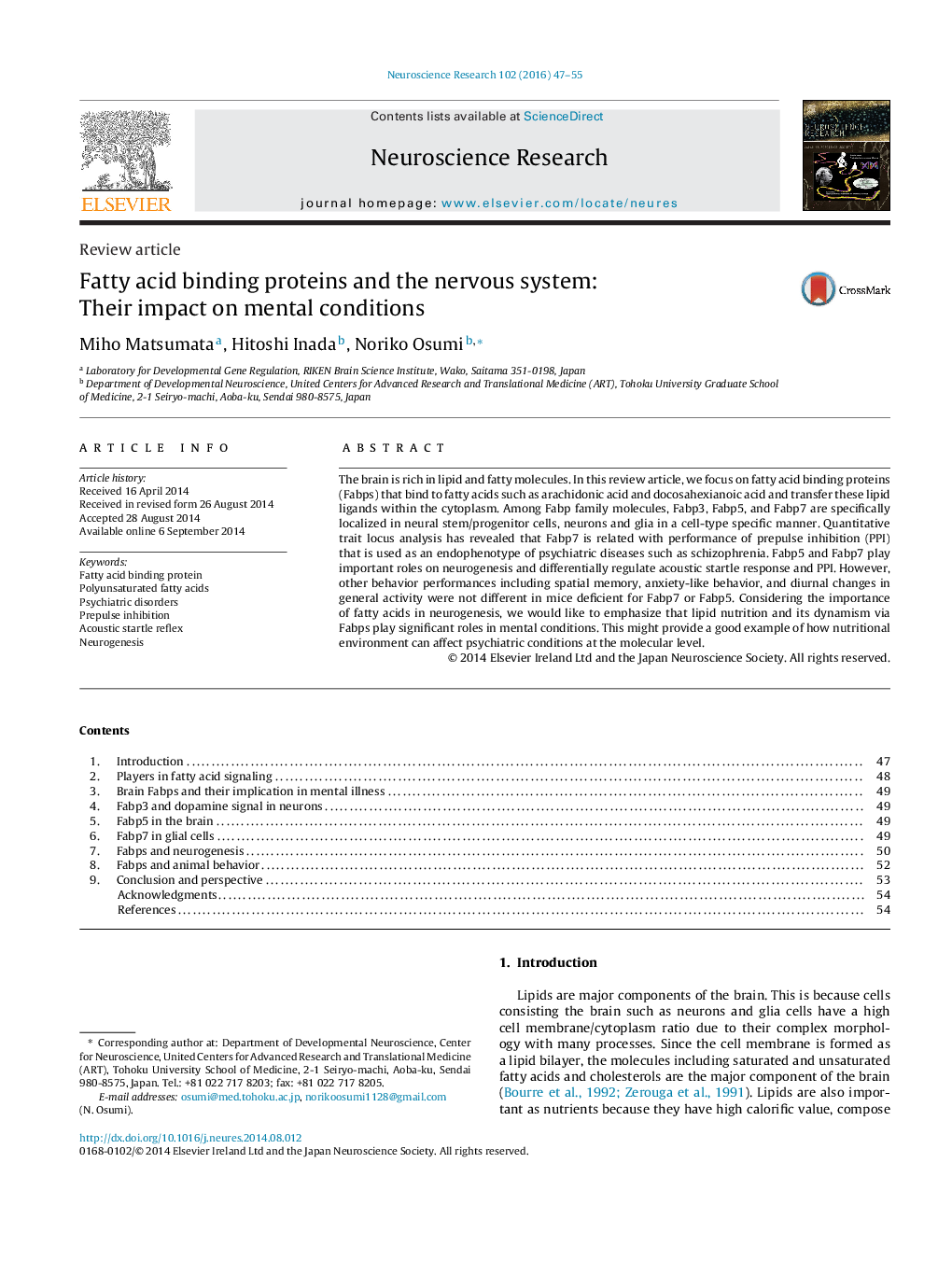| کد مقاله | کد نشریه | سال انتشار | مقاله انگلیسی | نسخه تمام متن |
|---|---|---|---|---|
| 4351351 | 1615281 | 2016 | 9 صفحه PDF | دانلود رایگان |
• Fatty acids act as building blocks, energy sources, and signaling molecules in cells.
• Fatty acid binding proteins regulate various physiological responses.
• Polyunsaturated fatty acids are an important factor in the brain function.
• FABPs may be involved with psychiatric disorders through neurogenesis in the brain.
• Suitable PUFA supply could be a therapeutic/preventive approach for mental illness.
The brain is rich in lipid and fatty molecules. In this review article, we focus on fatty acid binding proteins (Fabps) that bind to fatty acids such as arachidonic acid and docosahexianoic acid and transfer these lipid ligands within the cytoplasm. Among Fabp family molecules, Fabp3, Fabp5, and Fabp7 are specifically localized in neural stem/progenitor cells, neurons and glia in a cell-type specific manner. Quantitative trait locus analysis has revealed that Fabp7 is related with performance of prepulse inhibition (PPI) that is used as an endophenotype of psychiatric diseases such as schizophrenia. Fabp5 and Fabp7 play important roles on neurogenesis and differentially regulate acoustic startle response and PPI. However, other behavior performances including spatial memory, anxiety-like behavior, and diurnal changes in general activity were not different in mice deficient for Fabp7 or Fabp5. Considering the importance of fatty acids in neurogenesis, we would like to emphasize that lipid nutrition and its dynamism via Fabps play significant roles in mental conditions. This might provide a good example of how nutritional environment can affect psychiatric conditions at the molecular level.
Journal: Neuroscience Research - Volume 102, January 2016, Pages 47–55
